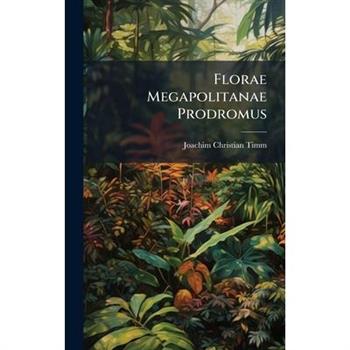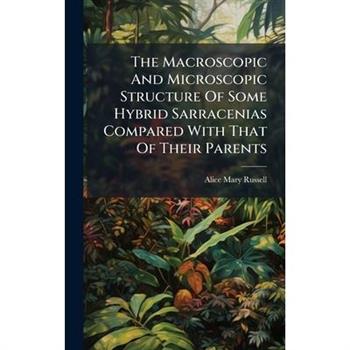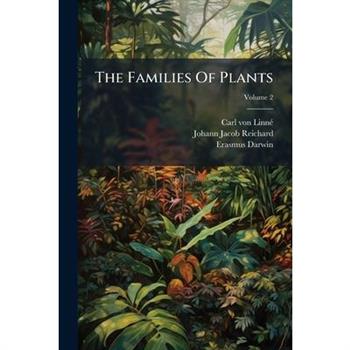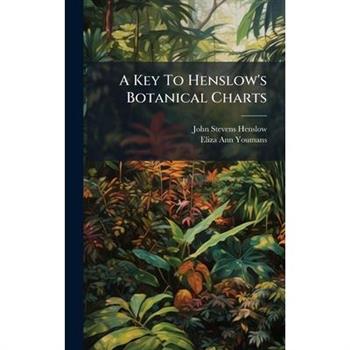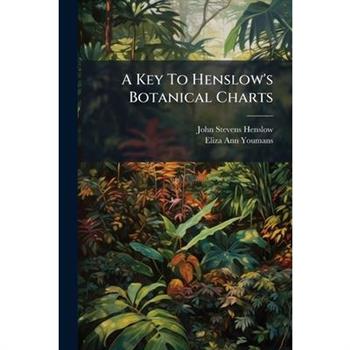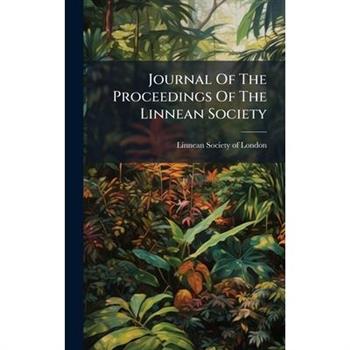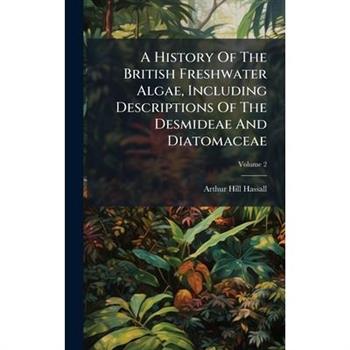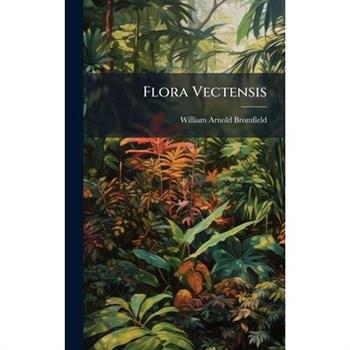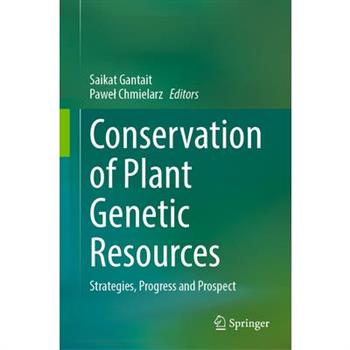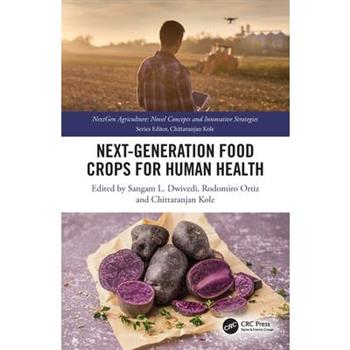A Handbook for the Use of Teachers to Accompany Bergen's Foundation of Botany
"A Handbook for the Use of Teachers to Accompany Bergen's Foundation of Botany" is a valuable resource designed to enhance the teaching of botany at the turn of the 20th century. Written by Joseph Y. Bergen, a respected educator, this handbook provides teachers with practical guidance and supplementary materials to effectively convey the principles of plant science to their students.Offering insights into pedagogical approaches and methodologies specific to botanical education, the handbook aims to facilitate a deeper understanding of plant biology. It serves as a companion to Bergen's "Foundation of Botany," offering teachers additional tools and strategies to enrich their lessons and engage students in the study of the plant kingdom. This handbook remains a significant historical artifact, reflecting the educational practices and scientific knowledge of its time.This work has been selected by scholars as being culturally important, and is part of the knowledge base of civilization as we know it. This work was reproduced from the original artifact, and remains as true to the original work as possible. Therefore, you will see the original copyright references, library stamps (as most of these works have been housed in our most important libraries around the world), and other notations in the work.This work is in the public domain in the United States of America, and possibly other nations. Within the United States, you may freely copy and distribute this work, as no entity (individual or corporate) has a copyright on the body of the work.As a reproduction of a historical artifact, this work may contain missing or blurred pages, poor pictures, errant marks, etc. Scholars believe, and we concur, that this work is important enough to be preserved, reproduced, and made generally available to the public. We appreciate your support of the preservation process, and thank you for being an important part of keeping this knowledge alive and relevant.
Wild Wheat in Palestine
Wild Wheat in Palestine, Volume 274, explores the botanical characteristics and agricultural potential of wild wheat varieties found in the region. Authored by O.F. Cook, this volume presents detailed observations and analyses of the plant's unique traits and their possible applications in crop improvement. The study provides valuable insights into the natural history of Palestine and its significance in the development of agriculture.This book is essential for botanists, agricultural researchers, and historians interested in the origins and evolution of wheat cultivation. The author's meticulous research and insightful commentary make this a timeless contribution to the field.This work has been selected by scholars as being culturally important, and is part of the knowledge base of civilization as we know it. This work was reproduced from the original artifact, and remains as true to the original work as possible. Therefore, you will see the original copyright references, library stamps (as most of these works have been housed in our most important libraries around the world), and other notations in the work.This work is in the public domain in the United States of America, and possibly other nations. Within the United States, you may freely copy and distribute this work, as no entity (individual or corporate) has a copyright on the body of the work.As a reproduction of a historical artifact, this work may contain missing or blurred pages, poor pictures, errant marks, etc. Scholars believe, and we concur, that this work is important enough to be preserved, reproduced, and made generally available to the public. We appreciate your support of the preservation process, and thank you for being an important part of keeping this knowledge alive and relevant.
Flora of the Matawan Formation (Crosswick's Clays)
"Flora of the Matawan Formation (Crosswick's Clays)" by Edward Wilber Berry offers a detailed examination of plant fossils found in the Matawan Formation. This 1903 publication provides invaluable insights into the paleobotany of the region, documenting and describing various plant species preserved in the Crosswick's Clays. Berry's work is essential for researchers and enthusiasts interested in the geological history and plant life of the late Cretaceous period. The meticulous descriptions and illustrations within this volume serve as a cornerstone for understanding the evolution and distribution of flora during this era. This book remains a significant contribution to the fields of botany, paleontology, and geological studies. This work has been selected by scholars as being culturally important, and is part of the knowledge base of civilization as we know it. This work was reproduced from the original artifact, and remains as true to the original work as possible. Therefore, you will see the original copyright references, library stamps (as most of these works have been housed in our most important libraries around the world), and other notations in the work.This work is in the public domain in the United States of America, and possibly other nations. Within the United States, you may freely copy and distribute this work, as no entity (individual or corporate) has a copyright on the body of the work.As a reproduction of a historical artifact, this work may contain missing or blurred pages, poor pictures, errant marks, etc. Scholars believe, and we concur, that this work is important enough to be preserved, reproduced, and made generally available to the public. We appreciate your support of the preservation process, and thank you for being an important part of keeping this knowledge alive and relevant.
A Popular Description of the Common Oregon Ferns; Contribution From the Herbarium of the University of Oregon
"A Popular Description of the Common Oregon Ferns" offers a detailed look at the ferns native to the Oregon region. Published as a contribution from the Herbarium of the University of Oregon, this work provides accessible descriptions intended for a broad audience, not just botanists. The text details the characteristics, habitats, and distribution of various fern species, making it a valuable resource for students, researchers, and nature enthusiasts interested in the flora of the Pacific Northwest.Originally published in 1913, this book is a useful reference for anyone seeking to identify and understand the common ferns of Oregon. It provides a glimpse into the botanical research and educational resources available in the early 20th century. The book serves as a historical record of the region's plant life and a practical guide to fern identification.This work has been selected by scholars as being culturally important, and is part of the knowledge base of civilization as we know it. This work was reproduced from the original artifact, and remains as true to the original work as possible. Therefore, you will see the original copyright references, library stamps (as most of these works have been housed in our most important libraries around the world), and other notations in the work.This work is in the public domain in the United States of America, and possibly other nations. Within the United States, you may freely copy and distribute this work, as no entity (individual or corporate) has a copyright on the body of the work.As a reproduction of a historical artifact, this work may contain missing or blurred pages, poor pictures, errant marks, etc. Scholars believe, and we concur, that this work is important enough to be preserved, reproduced, and made generally available to the public. We appreciate your support of the preservation process, and thank you for being an important part of keeping this knowledge alive and relevant.
A Handbook of Fungi
A compact and practical pocket-book, A Handbook of Fungi introduces readers to the diverse fungal species found across Britain's woodlands, heaths, and meadows. Drawing on his years of fieldwork and botanical observation, E. M. Holmes offers a concise guide to fungal morphology, classification, and habitat. Published at the end of the nineteenth century, this volume expresses a deep appreciation for fungi as an essential part of Britain's ecosystems. Designed for students, amateur botanists, and surveyors in the field, it remains a valuable resource for those documenting or studying native fungal biodiversity. This small field guide is taken from the first part of Holmes' seminal British Fungi, Lichens and Mosses (1886), and is ideal as both a reference tool and an entry point into mycology.
About Mushrooms
"About Mushrooms: A Guide To The Study Of Esculent And Poisonous Fungi" by Julius Auboineau Palmer, offers a comprehensive introduction to the fascinating world of mushrooms. This guide explores the identification, characteristics, and study of both edible and poisonous fungi. Providing practical knowledge for enthusiasts and researchers alike, Palmer's work delves into the essential aspects of mycology, enabling readers to distinguish between safe and harmful species. This book is an invaluable resource for anyone interested in foraging, botany, or the broader study of natural history. It remains a relevant guide for understanding the diverse and ecologically significant realm of mushrooms.This work has been selected by scholars as being culturally important, and is part of the knowledge base of civilization as we know it. This work was reproduced from the original artifact, and remains as true to the original work as possible. Therefore, you will see the original copyright references, library stamps (as most of these works have been housed in our most important libraries around the world), and other notations in the work.This work is in the public domain in the United States of America, and possibly other nations. Within the United States, you may freely copy and distribute this work, as no entity (individual or corporate) has a copyright on the body of the work.As a reproduction of a historical artifact, this work may contain missing or blurred pages, poor pictures, errant marks, etc. Scholars believe, and we concur, that this work is important enough to be preserved, reproduced, and made generally available to the public. We appreciate your support of the preservation process, and thank you for being an important part of keeping this knowledge alive and relevant.
The Flora Of Northumberland And Durham
The Flora of Northumberland and Durham, by Nathaniel John Winch, is a comprehensive historical survey of the plant life in these two northern English counties. This meticulously detailed work, originally published in the early 19th century, provides an exhaustive catalog of plant species, along with their habitats, distribution, and local variations. Winch's detailed observations offer invaluable insights into the region's botanical history. This book is an essential resource for botanists, ecologists, and historians of science, as well as anyone interested in the natural history of Northumberland and Durham. It stands as a lasting contribution to our understanding of regional biodiversity and ecological change over time.This work has been selected by scholars as being culturally important, and is part of the knowledge base of civilization as we know it. This work was reproduced from the original artifact, and remains as true to the original work as possible. Therefore, you will see the original copyright references, library stamps (as most of these works have been housed in our most important libraries around the world), and other notations in the work.This work is in the public domain in the United States of America, and possibly other nations. Within the United States, you may freely copy and distribute this work, as no entity (individual or corporate) has a copyright on the body of the work.As a reproduction of a historical artifact, this work may contain missing or blurred pages, poor pictures, errant marks, etc. Scholars believe, and we concur, that this work is important enough to be preserved, reproduced, and made generally available to the public. We appreciate your support of the preservation process, and thank you for being an important part of keeping this knowledge alive and relevant.
Carolus Linnaei Species Plantarum
Carolus Linnaei Species Plantarum, Volume 1, is a foundational work in botany by Carl von Linn矇 (Linnaeus). Originally published in 1753, this book is a cornerstone of modern plant taxonomy, presenting a comprehensive catalog of all plant species known at the time. The "Species Plantarum" introduced the binomial nomenclature system, a standardized method for naming plants with a genus and species, revolutionizing the way plants are classified and studied.This volume meticulously describes and classifies plants according to Linnaeus's sexual system, organizing them by their reproductive structures. The work not only provides detailed descriptions but also includes information on the plants' origins, habitats, and medicinal uses. As a landmark achievement in the history of science, "Carolus Linnaei Species Plantarum" remains an essential resource for botanists, historians of science, and anyone interested in the development of biological classification.This work has been selected by scholars as being culturally important, and is part of the knowledge base of civilization as we know it. This work was reproduced from the original artifact, and remains as true to the original work as possible. Therefore, you will see the original copyright references, library stamps (as most of these works have been housed in our most important libraries around the world), and other notations in the work.This work is in the public domain in the United States of America, and possibly other nations. Within the United States, you may freely copy and distribute this work, as no entity (individual or corporate) has a copyright on the body of the work.As a reproduction of a historical artifact, this work may contain missing or blurred pages, poor pictures, errant marks, etc. Scholars believe, and we concur, that this work is important enough to be preserved, reproduced, and made generally available to the public. We appreciate your support of the preservation process, and thank you for being an important part of keeping this knowledge alive and relevant.
The Plants Indigenous Around Sharks Bay And Its Vicinity
"The Plants Indigenous Around Sharks Bay And Its Vicinity," with collections from the Honorable John Forrest, is a significant work by Ferdinand von Mueller. This book provides a detailed catalog of the plant life native to the Shark Bay region of Western Australia. Von Mueller's meticulous descriptions and Forrest's dedicated collections offer a valuable resource for botanists, ecologists, and historians interested in the natural history of Australia. This historical record captures a snapshot of the region's flora, making it an important reference for understanding ecological changes over time. The collaboration between a renowned botanist and a dedicated collector ensures the book's enduring relevance for researchers and enthusiasts alike.This work has been selected by scholars as being culturally important, and is part of the knowledge base of civilization as we know it. This work was reproduced from the original artifact, and remains as true to the original work as possible. Therefore, you will see the original copyright references, library stamps (as most of these works have been housed in our most important libraries around the world), and other notations in the work.This work is in the public domain in the United States of America, and possibly other nations. Within the United States, you may freely copy and distribute this work, as no entity (individual or corporate) has a copyright on the body of the work.As a reproduction of a historical artifact, this work may contain missing or blurred pages, poor pictures, errant marks, etc. Scholars believe, and we concur, that this work is important enough to be preserved, reproduced, and made generally available to the public. We appreciate your support of the preservation process, and thank you for being an important part of keeping this knowledge alive and relevant.
Tentamen Florulae Lichenum Eiffliacae
Tentamen Florulae Lichenum Eiffliacae, or 'An Attempt at a Lichen Flora of the Eifel, ' by Carl Anton Fingerhuth, is a significant contribution to the field of botany. This book presents an enumeration of the lichens found in the Eifel region. It offers a detailed look at the lichen species of this specific geographical area, providing valuable insights for botanists, ecologists, and anyone interested in the flora of the Eifel. Fingerhuth's work is a valuable historical record of the region's biodiversity, offering a snapshot of the lichens present in the Eifel during the time of its writing. It remains relevant for researchers studying the distribution, taxonomy, and ecology of lichens.This work has been selected by scholars as being culturally important, and is part of the knowledge base of civilization as we know it. This work was reproduced from the original artifact, and remains as true to the original work as possible. Therefore, you will see the original copyright references, library stamps (as most of these works have been housed in our most important libraries around the world), and other notations in the work.This work is in the public domain in the United States of America, and possibly other nations. Within the United States, you may freely copy and distribute this work, as no entity (individual or corporate) has a copyright on the body of the work.As a reproduction of a historical artifact, this work may contain missing or blurred pages, poor pictures, errant marks, etc. Scholars believe, and we concur, that this work is important enough to be preserved, reproduced, and made generally available to the public. We appreciate your support of the preservation process, and thank you for being an important part of keeping this knowledge alive and relevant.
Illustrations Of New South Wales Plants, Parts 1-3
"Illustrations Of New South Wales Plants, Parts 1-3" presents a detailed early 20th-century botanical record by Joseph Henry Maiden. This collection offers meticulously rendered illustrations of the diverse plant life native to the New South Wales region of Australia. Maiden's work is essential for botanists, historians of science, and anyone with an interest in the unique flora of Australia. The book stands as a valuable resource for understanding and appreciating the botanical heritage of New South Wales.This work has been selected by scholars as being culturally important, and is part of the knowledge base of civilization as we know it. This work was reproduced from the original artifact, and remains as true to the original work as possible. Therefore, you will see the original copyright references, library stamps (as most of these works have been housed in our most important libraries around the world), and other notations in the work.This work is in the public domain in the United States of America, and possibly other nations. Within the United States, you may freely copy and distribute this work, as no entity (individual or corporate) has a copyright on the body of the work.As a reproduction of a historical artifact, this work may contain missing or blurred pages, poor pictures, errant marks, etc. Scholars believe, and we concur, that this work is important enough to be preserved, reproduced, and made generally available to the public. We appreciate your support of the preservation process, and thank you for being an important part of keeping this knowledge alive and relevant.
Studies Upon Cucumber Diseases
"Studies Upon Cucumber Diseases" offers a detailed examination of the various diseases affecting cucumber plants. Authored by Eubanks Carsner, this work provides valuable insights into the identification, understanding, and potential management of these agricultural challenges. This book is an essential resource for agricultural scientists, botanists, and anyone involved in the cultivation of cucumbers, offering practical knowledge and scientific analysis to aid in preserving crop health and productivity.This work has been selected by scholars as being culturally important, and is part of the knowledge base of civilization as we know it. This work was reproduced from the original artifact, and remains as true to the original work as possible. Therefore, you will see the original copyright references, library stamps (as most of these works have been housed in our most important libraries around the world), and other notations in the work.This work is in the public domain in the United States of America, and possibly other nations. Within the United States, you may freely copy and distribute this work, as no entity (individual or corporate) has a copyright on the body of the work.As a reproduction of a historical artifact, this work may contain missing or blurred pages, poor pictures, errant marks, etc. Scholars believe, and we concur, that this work is important enough to be preserved, reproduced, and made generally available to the public. We appreciate your support of the preservation process, and thank you for being an important part of keeping this knowledge alive and relevant.
Spindle Formation In The Pollen-mother-cells Of Cassia Tomentosa L.
Spindle Formation In The Pollen-mother-cells Of Cassia Tomentosa L., Volume 2, presents detailed research into the cellular mechanisms of plant reproduction. Authored by Alice Eastwood, Samuel Bonsall Parish, Winthrop John Van Leuven Osterhout, and other esteemed members of the California Academy of Sciences, this volume delves into the intricacies of spindle formation during pollen development in the Cassia Tomentosa plant species. This study offers insights into the cytological processes essential for plant fertility and genetics. It remains a significant contribution to the field of botany and continues to be relevant for researchers and students studying plant biology, cellular biology, and the history of science. This volume represents meticulous scientific inquiry.This work has been selected by scholars as being culturally important, and is part of the knowledge base of civilization as we know it. This work was reproduced from the original artifact, and remains as true to the original work as possible. Therefore, you will see the original copyright references, library stamps (as most of these works have been housed in our most important libraries around the world), and other notations in the work.This work is in the public domain in the United States of America, and possibly other nations. Within the United States, you may freely copy and distribute this work, as no entity (individual or corporate) has a copyright on the body of the work.As a reproduction of a historical artifact, this work may contain missing or blurred pages, poor pictures, errant marks, etc. Scholars believe, and we concur, that this work is important enough to be preserved, reproduced, and made generally available to the public. We appreciate your support of the preservation process, and thank you for being an important part of keeping this knowledge alive and relevant.
The Orchid Review
The Orchid Review, Volume 15, presents a detailed look into the world of orchids, offering insights into their cultivation, care, and the latest developments in orchid botany. Compiled anonymously, this volume provides a wealth of information for both amateur enthusiasts and seasoned horticulturalists. Readers will find detailed articles, practical advice, and observations on various orchid species, making it an invaluable resource for anyone passionate about these exquisite flowers. This edition captures the historical context of orchid research and cultivation practices of its time, offering a unique glimpse into the evolving understanding of these fascinating plants. A must-read for anyone interested in the rich history and enduring appeal of orchids.This work has been selected by scholars as being culturally important, and is part of the knowledge base of civilization as we know it. This work was reproduced from the original artifact, and remains as true to the original work as possible. Therefore, you will see the original copyright references, library stamps (as most of these works have been housed in our most important libraries around the world), and other notations in the work.This work is in the public domain in the United States of America, and possibly other nations. Within the United States, you may freely copy and distribute this work, as no entity (individual or corporate) has a copyright on the body of the work.As a reproduction of a historical artifact, this work may contain missing or blurred pages, poor pictures, errant marks, etc. Scholars believe, and we concur, that this work is important enough to be preserved, reproduced, and made generally available to the public. We appreciate your support of the preservation process, and thank you for being an important part of keeping this knowledge alive and relevant.
The Orchid Review
"The Orchid Review, Volume 6" offers a detailed look into the world of orchids. Written anonymously, this volume provides valuable insights into orchid cultivation, care, and the fascinating botanical aspects of these captivating flowers. Whether you're a seasoned horticulturist or a budding enthusiast, this book provides a wealth of information. Explore detailed descriptions and practical advice to help you successfully grow and appreciate these beautiful plants.This work has been selected by scholars as being culturally important, and is part of the knowledge base of civilization as we know it. This work was reproduced from the original artifact, and remains as true to the original work as possible. Therefore, you will see the original copyright references, library stamps (as most of these works have been housed in our most important libraries around the world), and other notations in the work.This work is in the public domain in the United States of America, and possibly other nations. Within the United States, you may freely copy and distribute this work, as no entity (individual or corporate) has a copyright on the body of the work.As a reproduction of a historical artifact, this work may contain missing or blurred pages, poor pictures, errant marks, etc. Scholars believe, and we concur, that this work is important enough to be preserved, reproduced, and made generally available to the public. We appreciate your support of the preservation process, and thank you for being an important part of keeping this knowledge alive and relevant.
Tentamen Florulae Lichenum Eiffliacae
Tentamen Florulae Lichenum Eiffliacae, or 'An Attempt at a Lichen Flora of the Eifel, ' by Carl Anton Fingerhuth, is a significant contribution to the field of botany. This book presents an enumeration of the lichens found in the Eifel region. It offers a detailed look at the lichen species of this specific geographical area, providing valuable insights for botanists, ecologists, and anyone interested in the flora of the Eifel. Fingerhuth's work is a valuable historical record of the region's biodiversity, offering a snapshot of the lichens present in the Eifel during the time of its writing. It remains relevant for researchers studying the distribution, taxonomy, and ecology of lichens.This work has been selected by scholars as being culturally important, and is part of the knowledge base of civilization as we know it. This work was reproduced from the original artifact, and remains as true to the original work as possible. Therefore, you will see the original copyright references, library stamps (as most of these works have been housed in our most important libraries around the world), and other notations in the work.This work is in the public domain in the United States of America, and possibly other nations. Within the United States, you may freely copy and distribute this work, as no entity (individual or corporate) has a copyright on the body of the work.As a reproduction of a historical artifact, this work may contain missing or blurred pages, poor pictures, errant marks, etc. Scholars believe, and we concur, that this work is important enough to be preserved, reproduced, and made generally available to the public. We appreciate your support of the preservation process, and thank you for being an important part of keeping this knowledge alive and relevant.
Carolus Linnaei Species Plantarum
Carolus Linnaei Species Plantarum, Volume 2 is a seminal work in the field of botany by Carl von Linn矇 (Linnaeus). Originally published in 1753, this volume presents a comprehensive catalog of plant species known at the time, meticulously organized according to Linnaeus's groundbreaking sexual system of classification. The book provides detailed descriptions of each plant, their characteristics, and their relationships within the natural world. This edition offers invaluable insights into the historical context of botanical science and the development of modern taxonomy. It remains an essential resource for botanists, historians of science, and anyone interested in the legacy of Linnaeus's contributions to our understanding of plant life. 'Species Plantarum' laid the foundation for standardized plant nomenclature and continues to influence botanical research today.This work has been selected by scholars as being culturally important, and is part of the knowledge base of civilization as we know it. This work was reproduced from the original artifact, and remains as true to the original work as possible. Therefore, you will see the original copyright references, library stamps (as most of these works have been housed in our most important libraries around the world), and other notations in the work.This work is in the public domain in the United States of America, and possibly other nations. Within the United States, you may freely copy and distribute this work, as no entity (individual or corporate) has a copyright on the body of the work.As a reproduction of a historical artifact, this work may contain missing or blurred pages, poor pictures, errant marks, etc. Scholars believe, and we concur, that this work is important enough to be preserved, reproduced, and made generally available to the public. We appreciate your support of the preservation process, and thank you for being an important part of keeping this knowledge alive and relevant.
Carolus Linnaei Species Plantarum
Carolus Linnaei Species Plantarum, Volume 2 is a seminal work in the field of botany by Carl von Linn矇 (Linnaeus). Originally published in 1753, this volume presents a comprehensive catalog of plant species known at the time, meticulously organized according to Linnaeus's groundbreaking sexual system of classification. The book provides detailed descriptions of each plant, their characteristics, and their relationships within the natural world. This edition offers invaluable insights into the historical context of botanical science and the development of modern taxonomy. It remains an essential resource for botanists, historians of science, and anyone interested in the legacy of Linnaeus's contributions to our understanding of plant life. 'Species Plantarum' laid the foundation for standardized plant nomenclature and continues to influence botanical research today.This work has been selected by scholars as being culturally important, and is part of the knowledge base of civilization as we know it. This work was reproduced from the original artifact, and remains as true to the original work as possible. Therefore, you will see the original copyright references, library stamps (as most of these works have been housed in our most important libraries around the world), and other notations in the work.This work is in the public domain in the United States of America, and possibly other nations. Within the United States, you may freely copy and distribute this work, as no entity (individual or corporate) has a copyright on the body of the work.As a reproduction of a historical artifact, this work may contain missing or blurred pages, poor pictures, errant marks, etc. Scholars believe, and we concur, that this work is important enough to be preserved, reproduced, and made generally available to the public. We appreciate your support of the preservation process, and thank you for being an important part of keeping this knowledge alive and relevant.
The Natural History Of Plants
Explore the fascinating world of botany with "The Natural History Of Plants, Volume 7" by Henri Baillon. This comprehensive work delves into the intricacies of plant life, offering detailed descriptions and insights into various species and their characteristics. Baillon's meticulous research and accessible writing style make this volume a valuable resource for students, researchers, and anyone with a keen interest in the natural world. Originally published in the 19th century, this book offers a glimpse into the historical understanding of botany and the evolution of scientific thought.This work has been selected by scholars as being culturally important, and is part of the knowledge base of civilization as we know it. This work was reproduced from the original artifact, and remains as true to the original work as possible. Therefore, you will see the original copyright references, library stamps (as most of these works have been housed in our most important libraries around the world), and other notations in the work.This work is in the public domain in the United States of America, and possibly other nations. Within the United States, you may freely copy and distribute this work, as no entity (individual or corporate) has a copyright on the body of the work.As a reproduction of a historical artifact, this work may contain missing or blurred pages, poor pictures, errant marks, etc. Scholars believe, and we concur, that this work is important enough to be preserved, reproduced, and made generally available to the public. We appreciate your support of the preservation process, and thank you for being an important part of keeping this knowledge alive and relevant.
Flora Carolin?]ensis
Flora Carolin?]ensis, by John Linnaeus Edward Whitridge Shecut, is a historic botanical work documenting the plant life of South Carolina. This comprehensive guide provides detailed descriptions and classifications of various plant species found in the region. A valuable resource for botanists, historians, and anyone interested in the natural history of the Southeastern United States, "Flora Carolin?]ensis" offers insights into the region's rich biodiversity as it was understood in the early 19th century.This work has been selected by scholars as being culturally important, and is part of the knowledge base of civilization as we know it. This work was reproduced from the original artifact, and remains as true to the original work as possible. Therefore, you will see the original copyright references, library stamps (as most of these works have been housed in our most important libraries around the world), and other notations in the work.This work is in the public domain in the United States of America, and possibly other nations. Within the United States, you may freely copy and distribute this work, as no entity (individual or corporate) has a copyright on the body of the work.As a reproduction of a historical artifact, this work may contain missing or blurred pages, poor pictures, errant marks, etc. Scholars believe, and we concur, that this work is important enough to be preserved, reproduced, and made generally available to the public. We appreciate your support of the preservation process, and thank you for being an important part of keeping this knowledge alive and relevant.
The Orchid Review
"The Orchid Review, Volume 6" offers a detailed look into the world of orchids. Written anonymously, this volume provides valuable insights into orchid cultivation, care, and the fascinating botanical aspects of these captivating flowers. Whether you're a seasoned horticulturist or a budding enthusiast, this book provides a wealth of information. Explore detailed descriptions and practical advice to help you successfully grow and appreciate these beautiful plants.This work has been selected by scholars as being culturally important, and is part of the knowledge base of civilization as we know it. This work was reproduced from the original artifact, and remains as true to the original work as possible. Therefore, you will see the original copyright references, library stamps (as most of these works have been housed in our most important libraries around the world), and other notations in the work.This work is in the public domain in the United States of America, and possibly other nations. Within the United States, you may freely copy and distribute this work, as no entity (individual or corporate) has a copyright on the body of the work.As a reproduction of a historical artifact, this work may contain missing or blurred pages, poor pictures, errant marks, etc. Scholars believe, and we concur, that this work is important enough to be preserved, reproduced, and made generally available to the public. We appreciate your support of the preservation process, and thank you for being an important part of keeping this knowledge alive and relevant.
Carolus Linnaei Species Plantarum
Carolus Linnaei Species Plantarum, Volume 1, is a foundational work in botany by Carl von Linn矇 (Linnaeus). Originally published in 1753, this book is a cornerstone of modern plant taxonomy, presenting a comprehensive catalog of all plant species known at the time. The "Species Plantarum" introduced the binomial nomenclature system, a standardized method for naming plants with a genus and species, revolutionizing the way plants are classified and studied.This volume meticulously describes and classifies plants according to Linnaeus's sexual system, organizing them by their reproductive structures. The work not only provides detailed descriptions but also includes information on the plants' origins, habitats, and medicinal uses. As a landmark achievement in the history of science, "Carolus Linnaei Species Plantarum" remains an essential resource for botanists, historians of science, and anyone interested in the development of biological classification.This work has been selected by scholars as being culturally important, and is part of the knowledge base of civilization as we know it. This work was reproduced from the original artifact, and remains as true to the original work as possible. Therefore, you will see the original copyright references, library stamps (as most of these works have been housed in our most important libraries around the world), and other notations in the work.This work is in the public domain in the United States of America, and possibly other nations. Within the United States, you may freely copy and distribute this work, as no entity (individual or corporate) has a copyright on the body of the work.As a reproduction of a historical artifact, this work may contain missing or blurred pages, poor pictures, errant marks, etc. Scholars believe, and we concur, that this work is important enough to be preserved, reproduced, and made generally available to the public. We appreciate your support of the preservation process, and thank you for being an important part of keeping this knowledge alive and relevant.
Florae Megapolitanae Prodromus
"Florae Megapolitanae Prodromus" is a significant contribution to botanical literature by Joachim Christian Timm. This work meticulously catalogs and describes the flora of the Megapolis region, providing a valuable resource for botanists, historians of science, and anyone interested in the detailed study of plant life. Timm's careful observations and descriptions offer insights into the biodiversity of the area during his time. This book serves as an important reference for understanding the historical distribution and characteristics of plant species in the region. Its enduring value lies in its detailed documentation and contribution to the field of botany.This work has been selected by scholars as being culturally important, and is part of the knowledge base of civilization as we know it. This work was reproduced from the original artifact, and remains as true to the original work as possible. Therefore, you will see the original copyright references, library stamps (as most of these works have been housed in our most important libraries around the world), and other notations in the work.This work is in the public domain in the United States of America, and possibly other nations. Within the United States, you may freely copy and distribute this work, as no entity (individual or corporate) has a copyright on the body of the work.As a reproduction of a historical artifact, this work may contain missing or blurred pages, poor pictures, errant marks, etc. Scholars believe, and we concur, that this work is important enough to be preserved, reproduced, and made generally available to the public. We appreciate your support of the preservation process, and thank you for being an important part of keeping this knowledge alive and relevant.
The Macroscopic And Microscopic Structure Of Some Hybrid Sarracenias Compared With That Of Their Parents
"The Macroscopic And Microscopic Structure Of Some Hybrid Sarracenias Compared With That Of Their Parents" presents a detailed investigation into the structural characteristics of hybrid Sarracenia plants, comparing them with their parent species. Authored by Alice Mary Russell, this study delves into both the macroscopic and microscopic features, providing valuable insights into plant anatomy and the effects of hybridization. This scientific work is essential for botanists, horticulturalists, and anyone interested in the detailed study of plant structures and the genetic implications of plant breeding. The text explores the unique traits inherited and expressed in hybrid Sarracenias, offering a foundational understanding of plant morphology and adaptation.This work has been selected by scholars as being culturally important, and is part of the knowledge base of civilization as we know it. This work was reproduced from the original artifact, and remains as true to the original work as possible. Therefore, you will see the original copyright references, library stamps (as most of these works have been housed in our most important libraries around the world), and other notations in the work.This work is in the public domain in the United States of America, and possibly other nations. Within the United States, you may freely copy and distribute this work, as no entity (individual or corporate) has a copyright on the body of the work.As a reproduction of a historical artifact, this work may contain missing or blurred pages, poor pictures, errant marks, etc. Scholars believe, and we concur, that this work is important enough to be preserved, reproduced, and made generally available to the public. We appreciate your support of the preservation process, and thank you for being an important part of keeping this knowledge alive and relevant.
The Families Of Plants
"The Families Of Plants, Volume 2" presents a detailed exploration of plant classification based on the Linnaean system. Co-authored by Carl von Linn矇 (Linnaeus), Johann Jacob Reichard, and Erasmus Darwin, this volume continues the examination of plant families, focusing on their natural characteristics as determined by the number, figure, situation, and proportion of all parts of fructification. This work offers invaluable insights into the botanical science of the 18th century, showcasing the meticulous observation and categorization methods employed by leading naturalists of the era. A foundational text for understanding the development of botanical taxonomy and the enduring legacy of Linnaeus's contributions to the field.This work has been selected by scholars as being culturally important, and is part of the knowledge base of civilization as we know it. This work was reproduced from the original artifact, and remains as true to the original work as possible. Therefore, you will see the original copyright references, library stamps (as most of these works have been housed in our most important libraries around the world), and other notations in the work.This work is in the public domain in the United States of America, and possibly other nations. Within the United States, you may freely copy and distribute this work, as no entity (individual or corporate) has a copyright on the body of the work.As a reproduction of a historical artifact, this work may contain missing or blurred pages, poor pictures, errant marks, etc. Scholars believe, and we concur, that this work is important enough to be preserved, reproduced, and made generally available to the public. We appreciate your support of the preservation process, and thank you for being an important part of keeping this knowledge alive and relevant.
A Key To Henslow's Botanical Charts
This key unlocks the secrets of Professor John Stevens Henslow's renowned botanical charts, offering a fascinating glimpse into 19th-century science education. Authored in collaboration with Eliza Ann Youmans, "A Key To Henslow's Botanical Charts" provides invaluable context and explanation for Henslow's innovative teaching methods. Explore the detailed illustrations and learn about plant morphology, classification, and the vital role of botany in understanding the natural world. This book will be of interest to educators, historians of science, and anyone captivated by the beauty and complexity of the plant kingdom.This work has been selected by scholars as being culturally important, and is part of the knowledge base of civilization as we know it. This work was reproduced from the original artifact, and remains as true to the original work as possible. Therefore, you will see the original copyright references, library stamps (as most of these works have been housed in our most important libraries around the world), and other notations in the work.This work is in the public domain in the United States of America, and possibly other nations. Within the United States, you may freely copy and distribute this work, as no entity (individual or corporate) has a copyright on the body of the work.As a reproduction of a historical artifact, this work may contain missing or blurred pages, poor pictures, errant marks, etc. Scholars believe, and we concur, that this work is important enough to be preserved, reproduced, and made generally available to the public. We appreciate your support of the preservation process, and thank you for being an important part of keeping this knowledge alive and relevant.
A Revision Of The Species Of Abies
"A Revision Of The Species Of Abies" by William Ramsay M'Nab offers a detailed botanical study focusing on the Abies genus, commonly known as fir trees. This work provides a taxonomic revision, essential for botanists, forestry professionals, and anyone interested in dendrology. The book delves into the classification, characteristics, and distinctions among various Abies species.M'Nab's meticulous examination contributes significantly to the understanding of these coniferous trees. This revision is invaluable for academic research and practical application in forestry and conservation, providing a foundational reference for identifying and managing Abies species around the world. This classic work remains relevant for its rigorous approach to botanical taxonomy.This work has been selected by scholars as being culturally important, and is part of the knowledge base of civilization as we know it. This work was reproduced from the original artifact, and remains as true to the original work as possible. Therefore, you will see the original copyright references, library stamps (as most of these works have been housed in our most important libraries around the world), and other notations in the work.This work is in the public domain in the United States of America, and possibly other nations. Within the United States, you may freely copy and distribute this work, as no entity (individual or corporate) has a copyright on the body of the work.As a reproduction of a historical artifact, this work may contain missing or blurred pages, poor pictures, errant marks, etc. Scholars believe, and we concur, that this work is important enough to be preserved, reproduced, and made generally available to the public. We appreciate your support of the preservation process, and thank you for being an important part of keeping this knowledge alive and relevant.
Florae Megapolitanae Prodromus
"Florae Megapolitanae Prodromus" is a significant contribution to botanical literature by Joachim Christian Timm. This work meticulously catalogs and describes the flora of the Megapolis region, providing a valuable resource for botanists, historians of science, and anyone interested in the detailed study of plant life. Timm's careful observations and descriptions offer insights into the biodiversity of the area during his time. This book serves as an important reference for understanding the historical distribution and characteristics of plant species in the region. Its enduring value lies in its detailed documentation and contribution to the field of botany.This work has been selected by scholars as being culturally important, and is part of the knowledge base of civilization as we know it. This work was reproduced from the original artifact, and remains as true to the original work as possible. Therefore, you will see the original copyright references, library stamps (as most of these works have been housed in our most important libraries around the world), and other notations in the work.This work is in the public domain in the United States of America, and possibly other nations. Within the United States, you may freely copy and distribute this work, as no entity (individual or corporate) has a copyright on the body of the work.As a reproduction of a historical artifact, this work may contain missing or blurred pages, poor pictures, errant marks, etc. Scholars believe, and we concur, that this work is important enough to be preserved, reproduced, and made generally available to the public. We appreciate your support of the preservation process, and thank you for being an important part of keeping this knowledge alive and relevant.
A History Of The British Freshwater Algae, Including Descriptions Of The Desmideae And Diatomaceae
A History Of The British Freshwater Algae, by Arthur Hill Hassall, is a detailed survey of algae found in British fresh water sources. This second volume includes detailed descriptions of Desmideae and Diatomaceae, accompanied by over one hundred plates illustrating various species. This meticulously researched work provides a fascinating glimpse into Victorian-era botany and the study of microscopic plant life.Originally published in 1845, Hassall's comprehensive study remains a valuable resource for botanists, historians of science, and anyone interested in the natural history of the British Isles. The book offers an unparalleled level of detail, making it an essential reference for understanding the diversity and classification of freshwater algae during the 19th century. This edition preserves the original text and illustrations, ensuring that Hassall's important contribution to algal studies continues to inform and inspire.This work has been selected by scholars as being culturally important, and is part of the knowledge base of civilization as we know it. This work was reproduced from the original artifact, and remains as true to the original work as possible. Therefore, you will see the original copyright references, library stamps (as most of these works have been housed in our most important libraries around the world), and other notations in the work.This work is in the public domain in the United States of America, and possibly other nations. Within the United States, you may freely copy and distribute this work, as no entity (individual or corporate) has a copyright on the body of the work.As a reproduction of a historical artifact, this work may contain missing or blurred pages, poor pictures, errant marks, etc. Scholars believe, and we concur, that this work is important enough to be preserved, reproduced, and made generally available to the public. We appreciate your support of the preservation process, and thank you for being an important part of keeping this knowledge alive and relevant.
The Macroscopic And Microscopic Structure Of Some Hybrid Sarracenias Compared With That Of Their Parents
"The Macroscopic And Microscopic Structure Of Some Hybrid Sarracenias Compared With That Of Their Parents" presents a detailed investigation into the structural characteristics of hybrid Sarracenia plants, comparing them with their parent species. Authored by Alice Mary Russell, this study delves into both the macroscopic and microscopic features, providing valuable insights into plant anatomy and the effects of hybridization. This scientific work is essential for botanists, horticulturalists, and anyone interested in the detailed study of plant structures and the genetic implications of plant breeding. The text explores the unique traits inherited and expressed in hybrid Sarracenias, offering a foundational understanding of plant morphology and adaptation.This work has been selected by scholars as being culturally important, and is part of the knowledge base of civilization as we know it. This work was reproduced from the original artifact, and remains as true to the original work as possible. Therefore, you will see the original copyright references, library stamps (as most of these works have been housed in our most important libraries around the world), and other notations in the work.This work is in the public domain in the United States of America, and possibly other nations. Within the United States, you may freely copy and distribute this work, as no entity (individual or corporate) has a copyright on the body of the work.As a reproduction of a historical artifact, this work may contain missing or blurred pages, poor pictures, errant marks, etc. Scholars believe, and we concur, that this work is important enough to be preserved, reproduced, and made generally available to the public. We appreciate your support of the preservation process, and thank you for being an important part of keeping this knowledge alive and relevant.
A Revision Of The Species Of Abies
"A Revision Of The Species Of Abies" by William Ramsay M'Nab offers a detailed botanical study focusing on the Abies genus, commonly known as fir trees. This work provides a taxonomic revision, essential for botanists, forestry professionals, and anyone interested in dendrology. The book delves into the classification, characteristics, and distinctions among various Abies species.M'Nab's meticulous examination contributes significantly to the understanding of these coniferous trees. This revision is invaluable for academic research and practical application in forestry and conservation, providing a foundational reference for identifying and managing Abies species around the world. This classic work remains relevant for its rigorous approach to botanical taxonomy.This work has been selected by scholars as being culturally important, and is part of the knowledge base of civilization as we know it. This work was reproduced from the original artifact, and remains as true to the original work as possible. Therefore, you will see the original copyright references, library stamps (as most of these works have been housed in our most important libraries around the world), and other notations in the work.This work is in the public domain in the United States of America, and possibly other nations. Within the United States, you may freely copy and distribute this work, as no entity (individual or corporate) has a copyright on the body of the work.As a reproduction of a historical artifact, this work may contain missing or blurred pages, poor pictures, errant marks, etc. Scholars believe, and we concur, that this work is important enough to be preserved, reproduced, and made generally available to the public. We appreciate your support of the preservation process, and thank you for being an important part of keeping this knowledge alive and relevant.
Flora Bathoniensis
Flora Bathoniensis, by Charles Cardale Babington, is a meticulously compiled catalogue of plants indigenous to the vicinity of Bath. This detailed work provides a comprehensive overview of the region's botanical diversity, offering valuable insights for botanists, historians, and nature enthusiasts. With precise descriptions and careful classifications, the book serves as an essential resource for understanding the flora of the Bath area during the period it was written. This historical record is a testament to the rich natural heritage of the region and a valuable contribution to the field of botany. A fascinating read for anyone interested in the natural history of England.This work has been selected by scholars as being culturally important, and is part of the knowledge base of civilization as we know it. This work was reproduced from the original artifact, and remains as true to the original work as possible. Therefore, you will see the original copyright references, library stamps (as most of these works have been housed in our most important libraries around the world), and other notations in the work.This work is in the public domain in the United States of America, and possibly other nations. Within the United States, you may freely copy and distribute this work, as no entity (individual or corporate) has a copyright on the body of the work.As a reproduction of a historical artifact, this work may contain missing or blurred pages, poor pictures, errant marks, etc. Scholars believe, and we concur, that this work is important enough to be preserved, reproduced, and made generally available to the public. We appreciate your support of the preservation process, and thank you for being an important part of keeping this knowledge alive and relevant.
A Key To Henslow's Botanical Charts
This key unlocks the secrets of Professor John Stevens Henslow's renowned botanical charts, offering a fascinating glimpse into 19th-century science education. Authored in collaboration with Eliza Ann Youmans, "A Key To Henslow's Botanical Charts" provides invaluable context and explanation for Henslow's innovative teaching methods. Explore the detailed illustrations and learn about plant morphology, classification, and the vital role of botany in understanding the natural world. This book will be of interest to educators, historians of science, and anyone captivated by the beauty and complexity of the plant kingdom.This work has been selected by scholars as being culturally important, and is part of the knowledge base of civilization as we know it. This work was reproduced from the original artifact, and remains as true to the original work as possible. Therefore, you will see the original copyright references, library stamps (as most of these works have been housed in our most important libraries around the world), and other notations in the work.This work is in the public domain in the United States of America, and possibly other nations. Within the United States, you may freely copy and distribute this work, as no entity (individual or corporate) has a copyright on the body of the work.As a reproduction of a historical artifact, this work may contain missing or blurred pages, poor pictures, errant marks, etc. Scholars believe, and we concur, that this work is important enough to be preserved, reproduced, and made generally available to the public. We appreciate your support of the preservation process, and thank you for being an important part of keeping this knowledge alive and relevant.
Flora Vectensis
"Flora Vectensis" is a detailed botanical survey of the plants native to the Isle of Wight, written by William Arnold Bromfield. This comprehensive guide provides a systematic description of the ph?]nogamous, or flowering plants, and ferns found on the island. Originally published in the 19th century, this book offers valuable insights into the region's natural history during that period.Botanists, historians, and anyone with an interest in the natural heritage of the Isle of Wight will appreciate the meticulous detail and historical perspective offered in "Flora Vectensis". This book remains a significant resource for understanding the island's plant life and the botanical studies of the Victorian era.This work has been selected by scholars as being culturally important, and is part of the knowledge base of civilization as we know it. This work was reproduced from the original artifact, and remains as true to the original work as possible. Therefore, you will see the original copyright references, library stamps (as most of these works have been housed in our most important libraries around the world), and other notations in the work.This work is in the public domain in the United States of America, and possibly other nations. Within the United States, you may freely copy and distribute this work, as no entity (individual or corporate) has a copyright on the body of the work.As a reproduction of a historical artifact, this work may contain missing or blurred pages, poor pictures, errant marks, etc. Scholars believe, and we concur, that this work is important enough to be preserved, reproduced, and made generally available to the public. We appreciate your support of the preservation process, and thank you for being an important part of keeping this knowledge alive and relevant.
Journal Of The Proceedings Of The Linnean Society
This comprehensive collection, "Journal Of The Proceedings Of The Linnean Society: Botany, Volumes 5-6," offers a fascinating glimpse into the botanical research and discussions of the Linnean Society of London during a pivotal period in scientific history. A treasure trove for botanists, historians of science, and anyone interested in the development of botanical knowledge, these volumes showcase detailed reports, observations, and analyses presented by leading researchers of the time.Published under the auspices of the esteemed Linnean Society, the journal captures the essence of botanical exploration and discovery, reflecting the intellectual curiosity and rigorous methodology that characterized 19th-century scientific inquiry. Explore the detailed accounts of plant species, ecological studies, and theoretical debates that shaped our understanding of the natural world. This historical record remains an invaluable resource for understanding the foundations of modern botany and the enduring legacy of the Linnean Society.This work has been selected by scholars as being culturally important, and is part of the knowledge base of civilization as we know it. This work was reproduced from the original artifact, and remains as true to the original work as possible. Therefore, you will see the original copyright references, library stamps (as most of these works have been housed in our most important libraries around the world), and other notations in the work.This work is in the public domain in the United States of America, and possibly other nations. Within the United States, you may freely copy and distribute this work, as no entity (individual or corporate) has a copyright on the body of the work.As a reproduction of a historical artifact, this work may contain missing or blurred pages, poor pictures, errant marks, etc. Scholars believe, and we concur, that this work is important enough to be preserved, reproduced, and made generally available to the public. We appreciate your support of the preservation process, and thank you for being an important part of keeping this knowledge alive and relevant.
A History Of The British Freshwater Algae, Including Descriptions Of The Desmideae And Diatomaceae
A History Of The British Freshwater Algae, by Arthur Hill Hassall, is a detailed survey of algae found in British fresh water sources. This second volume includes detailed descriptions of Desmideae and Diatomaceae, accompanied by over one hundred plates illustrating various species. This meticulously researched work provides a fascinating glimpse into Victorian-era botany and the study of microscopic plant life.Originally published in 1845, Hassall's comprehensive study remains a valuable resource for botanists, historians of science, and anyone interested in the natural history of the British Isles. The book offers an unparalleled level of detail, making it an essential reference for understanding the diversity and classification of freshwater algae during the 19th century. This edition preserves the original text and illustrations, ensuring that Hassall's important contribution to algal studies continues to inform and inspire.This work has been selected by scholars as being culturally important, and is part of the knowledge base of civilization as we know it. This work was reproduced from the original artifact, and remains as true to the original work as possible. Therefore, you will see the original copyright references, library stamps (as most of these works have been housed in our most important libraries around the world), and other notations in the work.This work is in the public domain in the United States of America, and possibly other nations. Within the United States, you may freely copy and distribute this work, as no entity (individual or corporate) has a copyright on the body of the work.As a reproduction of a historical artifact, this work may contain missing or blurred pages, poor pictures, errant marks, etc. Scholars believe, and we concur, that this work is important enough to be preserved, reproduced, and made generally available to the public. We appreciate your support of the preservation process, and thank you for being an important part of keeping this knowledge alive and relevant.
Flora Vectensis
"Flora Vectensis" is a detailed botanical survey of the plants native to the Isle of Wight, written by William Arnold Bromfield. This comprehensive guide provides a systematic description of the ph?]nogamous, or flowering plants, and ferns found on the island. Originally published in the 19th century, this book offers valuable insights into the region's natural history during that period.Botanists, historians, and anyone with an interest in the natural heritage of the Isle of Wight will appreciate the meticulous detail and historical perspective offered in "Flora Vectensis". This book remains a significant resource for understanding the island's plant life and the botanical studies of the Victorian era.This work has been selected by scholars as being culturally important, and is part of the knowledge base of civilization as we know it. This work was reproduced from the original artifact, and remains as true to the original work as possible. Therefore, you will see the original copyright references, library stamps (as most of these works have been housed in our most important libraries around the world), and other notations in the work.This work is in the public domain in the United States of America, and possibly other nations. Within the United States, you may freely copy and distribute this work, as no entity (individual or corporate) has a copyright on the body of the work.As a reproduction of a historical artifact, this work may contain missing or blurred pages, poor pictures, errant marks, etc. Scholars believe, and we concur, that this work is important enough to be preserved, reproduced, and made generally available to the public. We appreciate your support of the preservation process, and thank you for being an important part of keeping this knowledge alive and relevant.
The Wonder of Mushrooms
Get to know the kingdom of Fungi like never before with this unique book that blends the science of mycology with lyrical prose and watercolor paintings.Take an extraordinary expedition into the diverse and enchanting realm of fungi. The Wonder of Mushrooms is where science meets poetry, where ancient wisdom converges with modern discovery. Maya Jewell Zeller and Jenny deFouw Geuder guide you into the hidden world beneath our feet. With a blend of scientific insight and artistic appreciation, the authors portray the crucial role of mushrooms in our ecosystem and celebrate their profound cultural significance.Learn about mushrooms' history and lore. Appreciate their myriad colors, shapes, and forms, as well as their vital role as nature's decomposers. Discover astonishing facts, such as how some bioluminescent species glow like fallen stars and where the extraordinary Humongous Fungus spans 2,385 acres. Perhaps most importantly, find out how fungi might prove to be humanity's unexpected saviors, offering solutions for everything from environmental pollution to sustainable architecture. Maya's lyrical prose pairs with Jenny's bright watercolors, creating an unparalleled ode to these foraging favorites that feels like both a scientific textbook and a beautiful gift book.Whether you're an artist, naturalist, or someone who's simply curious about the natural world, this book presents a profound journey into the kingdom of Fungi, where beauty and science intertwine in unexpected ways.Book Features: Lyrical prose that blends science with literary references and poetryProfessional watercolors that help make complex scientific concepts accessibleWide range of topics, including anatomy, biology, and ecologyEducational tribute that promotes wonder and curiosity
Conservation of Plant Genetic Resources
This book discusses validated in-vitro biotechnological interventions that have reshaped the landscape of plant genetic resource conservation. It covers essential topics such as collection processes, disease indexing, in-vitro culture establishment, multiplication techniques, and storage solutions ranging from short- to long-term strategies like cryopreservation. By addressing the challenges of ex-situ conservation management, this work offers a guide to preserving rare and endangered plants against the backdrop of climate change and unsustainable utilization. The chapters delve into critical themes such as slow growth strategies and synthetic seed technology for mid-term storage solutions. This book is for academicians, postgraduate students, and researchers in botany and plant biotechnology sectors, as well as molecular biologists and conservation enthusiasts.
Exploring Medicinal Bamboos
Therapeutic properties of bamboo have been known since ancient times as a part of several traditional systems of medicine and folk remedies in different parts of the world. Bamboo contains several active phytochemicals and minerals known for antioxidative and cardioprotective properties. This book is a comprehensive guide on botanical, ethnomedicinal, and pharmacological aspects of several medicinally active bamboo species.Exploring Medicinal Bamboos focuses on phytochemically active ingredients of bamboos imparting therapeutic potentials to each species. There are dedicated chapters on species such as Bambusa spp., Lophatherum gracile, Sasa senanensis, Melocanna baccifera, and Phyllostachys spp., providing a deep understanding of the medicinal potential of these plants. The book also expands knowledge on bamboos as medicinally active plants, including their distribution, propagation, and utilization.A volume in the Exploring Medicinal Plants series, this book is useful to academicians, researchers, and students involved with non-timber forest products, bamboo, and medicinal plants. Additionally, botanists, ecologists, phytochemists, and professionals in herbal drug and nutraceutical formulations will find the topics valuable.
Next Generation Food Crops for Human Health
As the global population surges, the challenge of feeding the world becomes increasingly urgent. Meeting this demand requires doubling crop yields and delivering safe, nutritious, and affordable food, but current agricultural practices fall short in combating malnutrition, climate change impacts, and the decline in food diversity.Next-Generation Food Crops for Human Health delves into the advances in genetic and genomic research that are revolutionizing the development of productive, nutrient-dense food crops. It presents insights into tools including high-throughput phenomics, DNA sequencing, and genomic selection, which enable scientists to discover functionally characterized genes and enhance staple crops, such as grains, legumes, fruits, vegetables, and oil crops. By leveraging these technologies, researchers are creating a new generation of foods that optimize essential nutrients, from complex carbohydrates and proteins to vitamins and bioactive compounds.A volume in the Nextgen Agriculture: Novel Concepts and Innovative Strategies series, this book is valuable to graduate and postgraduate students, postdoctoral researchers, and policymakers working toward improving nutritional security worldwide.




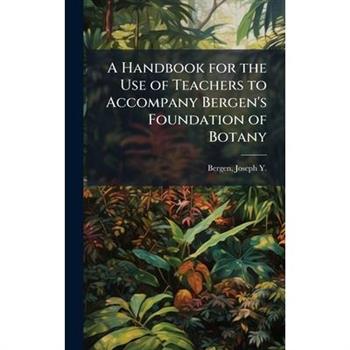




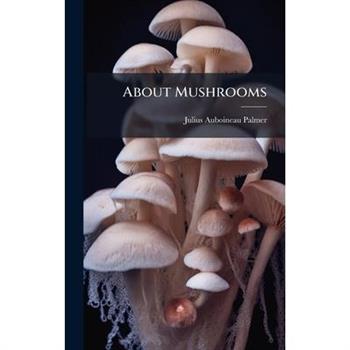


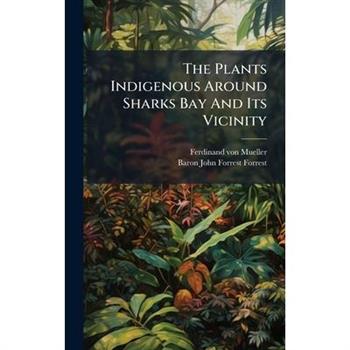


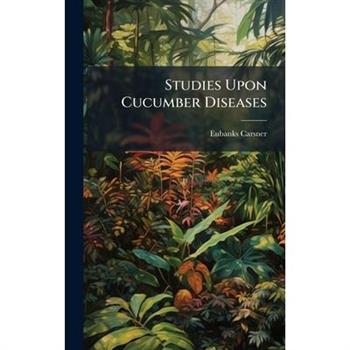


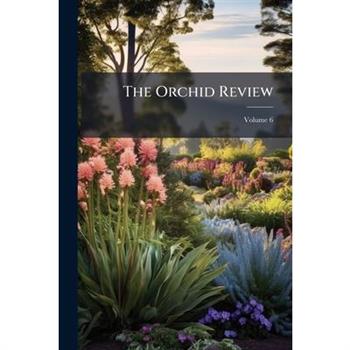


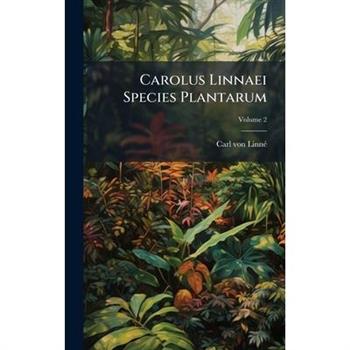

![Flora Carolin?]ensis Flora Carolin?]ensis](https://cdn.kingstone.com.tw/english/images/product/5621/9781024325621m.jpg?Q=42ee6)


